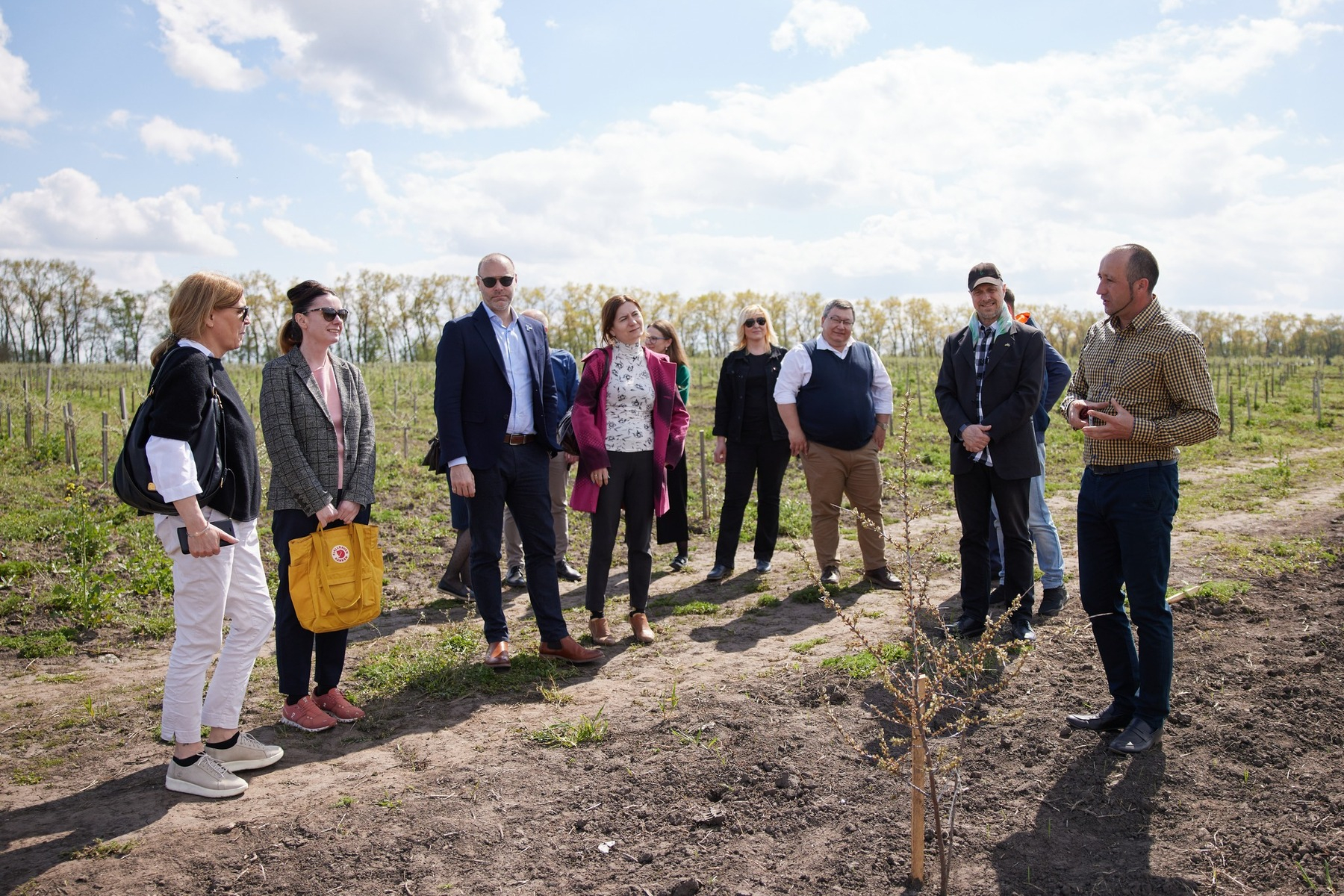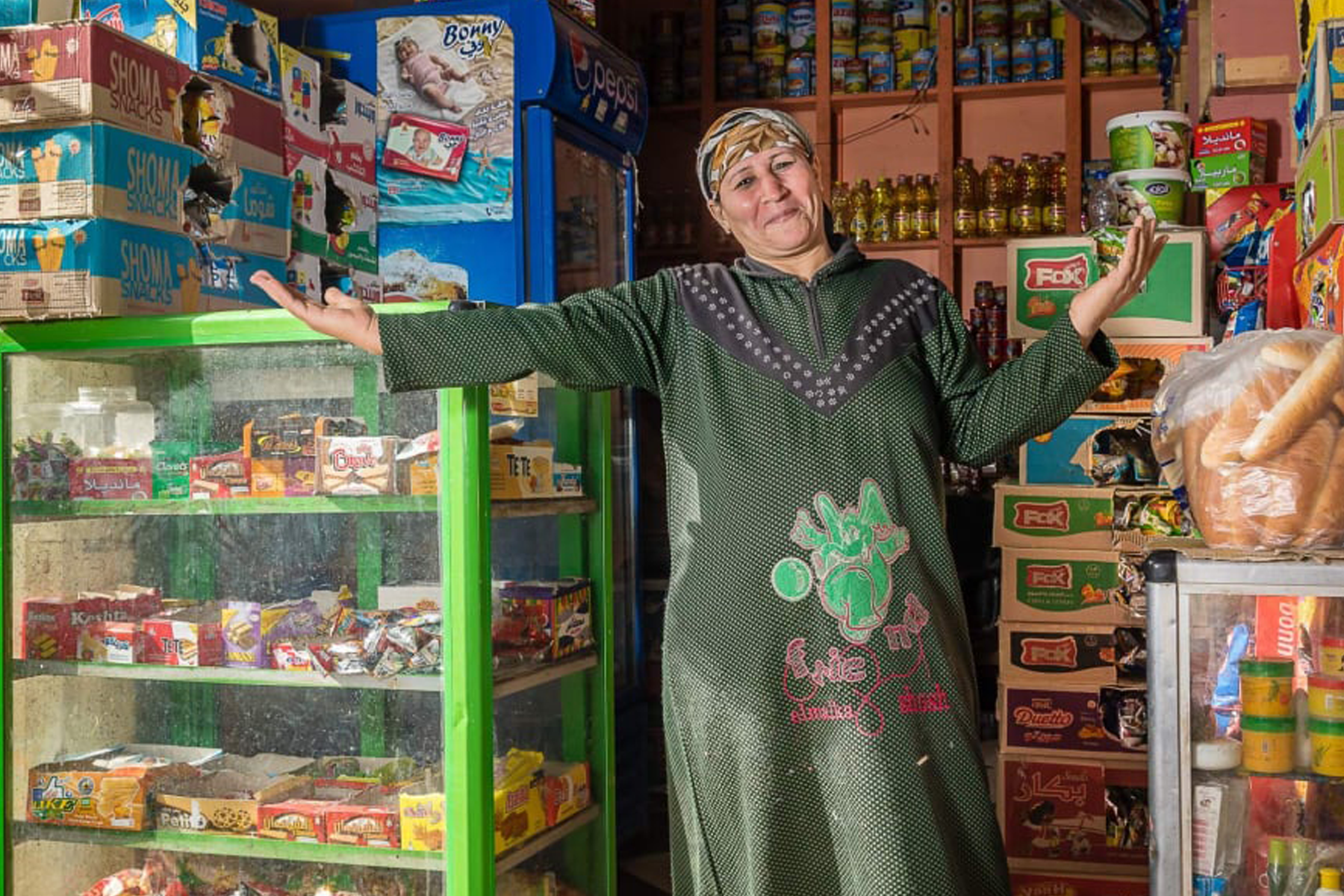Navigating IMM with Alfanar
Alfanar, the first venture philanthropy organisation in the Arab world, is proving that when done right, IMM can transform how social enterprises achieve meaningful change. Since its founding in 2004, Alfanar has been supporting social enterprises focused on empowering marginalised communities, with a special emphasis on women and children. Their commitment to using IMM as a tool for driving better outcomes is at the heart of their work.

Before diving into the particulars of Alfanar’s IMM approach, it’s worth taking a look at how it serves as a motor for the impact the organisation is looking to realise on the ground.
For this, Alfanar has been inspired by the definition set forward in our Navigating Impact guide, which states that IMM is in fact deeply embedded in the DNA of an organisation through its investment process. Rather than using it simply as a tool to help report impact results, it serves to assess shortcomings and possible improvements to Alfanar’s operations. This is a continuous feedback process, which helps them scale their impact. There’s a series of advantages for Alfanar attached to building a robust IMM system:
- It improves the effectiveness of their programs: Crucially, IMM is about ensuring that the interventions being deployed are making a tangible difference. Alfanar constantly measures the outcomes of their programs, ensuring they stay aligned with their mission of empowering vulnerable communities through education and employment opportunities. This focus on continuous refinement means their programs are always evolving to meet the needs of the communities they serve.
- Justifying their actions: Stakeholders —whether they be donors or institutions— require clear evidence that the money and resources they contribute are generating real results. IMM provides the data to back up Alfanar’s claims, assuring stakeholders that their contributions are making a difference and allowing the organisation to keep running its critical activities.
- Advocacy and institutional influence: In a broader sense, IMM enables Alfanar to advocate for larger systemic change. With solid data in hand, it can engage governments, multinationals, and global institutions like the UN, encouraging them to adopt or scale successful interventions. This ability to demonstrate success through data gives Alfanar a seat at the table with key decision-makers.
In line with the “How to do Impact measurement and management” study, Alfanar differentiates between three different levels of impact: the investee level (the impact social enterprises have on the people they serve), the investor level (the impact investors have on their investees) and the ecosystem level,, which tries to capture the investor’s contribution to the development of the broader impact ecosystem.
Investor level
Alfanar’s IMM framework is grounded in principles from Social Value International, which ensures they do not over-claim, are transparent with their results, and actively involve stakeholders in the process:

‘While these ideas may be very common sense, it is really important to put these on paper and commit to them’, says Mohammed Al Radi, Senior Investment Officer at Alfanar. Taking these principles and the 5-step-process developed by Impact Europe as a back-bone, Alfanar’s developed its own 5-point management system, that keeps repeating itself as operations continue:

POINT 1: Stakeholder engagement
Similarly to step 2 of Impact Europe’s framework, the first point is about stakeholders. The term stakeholder covers a wide range of individuals and organisations for Alfanar, ranging from investors to regulatory bodies, as well as the wider ecosystem, the ultimate beneficiaries and the general audience. Crucially, though, it’s the social enterprises that remain at the core.
These enterprises aren’t just recipients of financial resources or technical support—they are partners in the process of impact creation. Alfanar engages closely with these stakeholders to ensure they have a deep understanding of their needs, challenges, and progress. Regular communication and feedback loops are built into the IMM system, allowing the team to adapt their support in real-time based on the latest insights from the ground.
Stakeholder engagement, for Alfanar, is also about bringing together the different priorities of all stakeholders. For instance, where Alfanar is looking to support sustainable entrepreneurship, donors often have more specific metrics in mind, like improved employment or increased participation of women in the labour market. Add to this the investee’s focus, which is often connected to improving livelihoods in their community, and it is clear that it takes some communication to align on what could be valid targets that are relevant to all stakeholders.
POINT 2. Setting realistic, data-driven targets
Once the stakeholders are established, the next step of the IMM process consists of setting targets. ‘It is one of the more challenging aspects of IMM’, says Al Radi, ‘as there are many different frameworks you can use to help set these up’. Alfanar takes a pragmatic, data-informed approach to this process. Instead of relying on abstract goals, they set targets based on a mix of historical precedents, industry benchmarks, and other resources available to them. ‘Targets will never be perfect’, Al Radi adds, ‘but what matters is that they are based on something real’.
To give an idea of what this could look like, some real-life target of Alfanar entails assigning a value to the following metrics:
- the number of children provided access to qualitative primary or secondary education
- the proportion of youth and adults in formal and non-formal education or training
- the average monthly salary
- the median monthly salary
- the percentage of refugees employed
In practice, Alfanar groups many of its targets using the Sustainable Development Goals (SDGs) framework, using these internationally recognised benchmarks to guide their work in areas like education (SDG 4), decent work and economic growth (SDG 8), reduced inequalities (SDG 10), and responsible consumption and production (SDG 12).
POINT 3. Measuring results: using SMART criteria
Once these (perfectly imperfect) targets are set, measuring progress becomes critical, in line with step 3 of Impact Europe’s framework. According to Impact Europe’s recommendations, Alfanar follows the SMART criteria to ensure that their metrics are:

• Specific: They avoid broad or vague goals, opting instead for precise outcomes such as "increase in household income" or "number of children with improved educational outcomes."
• Measurable: Data is collected rigorously to ensure that progress can be quantified. This means going beyond simple outputs and focusing on the actual outcomes and impacts achieved.
• Achievable: Targets are set based on the capacity of the social enterprises and the context in which they operate.
• Relevant: All measurements are directly related to the core mission of Alfanar—empowering vulnerable populations.
• Time-bound: Alfanar sets clear timelines for achieving its goals, allowing for periodic reviews and adjustments.
For example, rather than using a broad term like "increased well-being," Alfanar breaks it down into specific indicators like income growth, access to education, and health outcomes. This level of detail allows them to pinpoint exactly where an intervention is succeeding or falling short, helping them refine their approach with greater precision.
POINT 4. Verifying data and ensuring accuracy
According to step 4 of Impact Europe’s framework, data verification is a critical but often overlooked step in IMM. ‘Simple errors in data collection, such as misspelled names or incorrect income figures, can significantly distort the picture of success’, says Al Radi. As such, it’s crucial to spend the necessary time to ensure previous efforts are not in vain.
An example of the importance of verifying data can be seen in the attribution process. Al Radi gives the example of a case wherein Alfanar has invested in a certain social enterprise, which subsequently reported a 70% increase in employment. While it would be tempting to claim that progress as a sign that Alfanar’s investment was succesful, it could also be the case that other investments have been made into the same social enterprise, thereby distorting the causal effect relation between the initial number and the Alfanar investment.
Alfanar takes data verification seriously, regularly reaching out to stakeholders to confirm the results being reported. This ensures that their data is not only accurate but also reflective of the real changes happening on the ground. They take it one step further still by incorporating feedback directly from beneficiaries.
This approach helps them identify unforeseen outcomes—both positive and negative—that may not have been captured in the initial data. This constant feedback loop helps the organisation remain agile, quickly adapting their programs to meet the evolving needs of the communities they serve.
POINT 5. Making data-driven decisions
Having done all of the above, it is time for the most important part of Alfanar’s IMM process: decision-making. This is crucial, because every decision comes with a change in daily operations or strategy.
All the data they collect and analyse is ultimately used to make informed decisions that enhance the effectiveness of their work. Whether it is refining a program, shifting resources, or deciding which social enterprises to invest in, every decision is ultimately driven by real-time data.
Alfanar also tracks the outcomes of these decisions, creating a cycle of continuous improvement. Doing this is ‘the best advice I can give to anyone looking to level up their IMM’, says Al Radi. ‘By recording each decision and its impact, you can learn from their successes and failures, ensuring that each new decision is better than the last.’
From here, the five-point cycle starts again, with decision being relayed to stakeholders, targets being reassessed, measured and verified, leading to new decisions further down the line.
Investee level
All of the above helps to build the case for Alfanar’s operations, and helps them drive their decision-making process. But what about the investee (i.e. the Alfanar portfolio enterprises)? What lessons can they draw from the IMM process? To ensure that the collected data is mutually beneficial to both Alfanar and the social enterprises, Alfanar uses Qlik.
Qlik is a business intelligence (BI) software that turns raw data into actionable insights. ‘Before Qlik, Alfanar’s data management was manual and time-consuming, requiring hours to sift through spreadsheets’, explains Al Radi. It often involved cumbersome processes, and extracting meaningful insights from data was difficult.
With Qlik, though, Alfanar has been able to streamline this process dramatically. The software allows them to create real-time dashboards that visualise data in intuitive, user-friendly ways. For example, they can quickly break down data by region, gender, income, or any number of other filters. This ability to slice and dice data in real-time helps them identify trends and make faster, more informed decisions.

Al Radi describes Qlik as a game-changer for their IMM process. Not only does it save time, but it also makes data more accessible to the entire team, ensuring that everyone—from program managers to decision-makers—has the insights they need at their fingertips. This includes the investees, who have opened up to the potential for knowledge that these dashboards offer. Interestingly, they are now asking for more metrics to report, in order to extract more learning from the dashboards built by Alfanar via Qlik.
Tackling data challenges
The collected data, together with gathered experience and theoretical insights, helps Alfanar make sound decisions.
With this in the back of the mind, it’s worth noting some of the challenges Alfanar faces when it comes to data management:
• Data overload: With so much data available, it can be difficult to focus on the metrics that matter most.
• Capacity constraints: Many social enterprises lack the resources or expertise to collect and analyse data effectively.
• Contradictory data: In some cases, data from different sources doesn’t match up, making it hard to draw clear conclusions.
Alfanar has addressed these challenges largely by building strong relationships with their partners and demonstrating the tangible value of data. By showing how data-driven decisions lead to better outcomes, they’ve encouraged social enterprises to take IMM more seriously. It is also where having a dedicated IMM manager can be important.
Key lessons learned
Alfanar’s approach to IMM offers valuable lessons for any organisation looking to enhance its impact. First and foremost, IMM isn’t just about reporting results to donors—it’s about learning, adapting, and improving. By using data to drive decisions, Alfanar has been able to create a cycle of continuous improvement that ensures their programs are always getting better.
One of the key takeaways is that organisations shouldn’t be intimidated by the complexity of data. It’s better to start small and gradually build a system that works, rather than waiting for the perfect solution. As Al Radi puts it, referring to a John Maynard Keynes quote, “I’d rather be vaguely right than precisely wrong.” This mindset of learning and adapting as they go has been central to Alfanar’s success so far, and it will continue to lead their way in the years to come.











